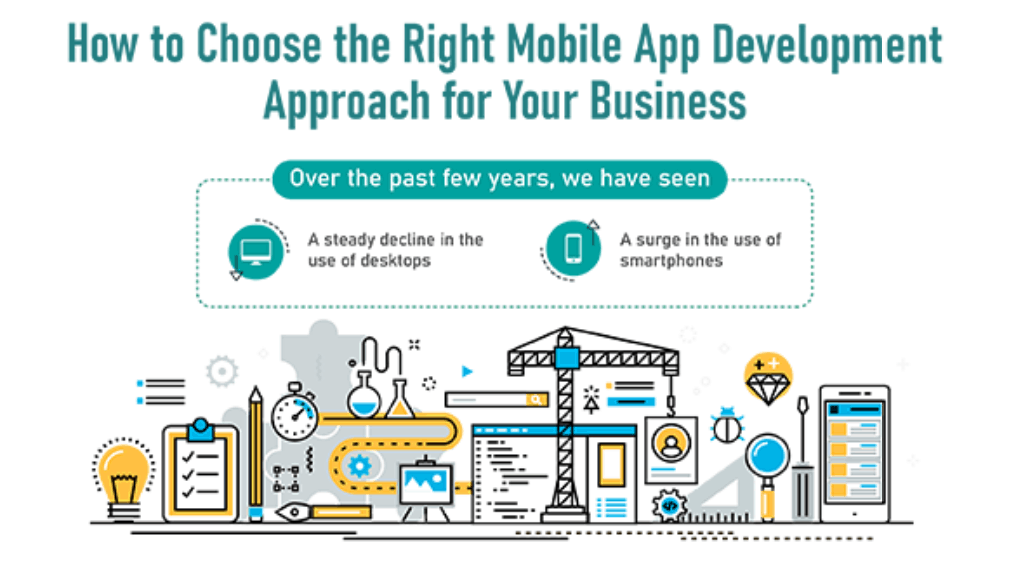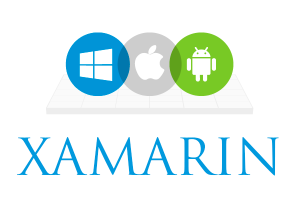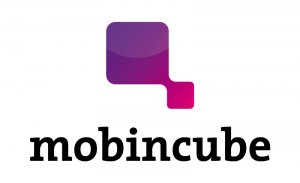Tag: cross platform mobile app development
Frameworks are the backbone of mobile app development. They are essential to building dependable apps quickly. When choosing a framework, you can choose between native or cross-platform applications. Though both approaches have advantages, cross-platform applications work on multiple devices regardless of their operating system.
Different companies use different technologies to build and design great apps. Various company requirements have led to the emergence of four major frameworks in the market – React Native, Flutter, Ionic, and Xamarin.
If you are considering building a cross-platform application, you must understand the basics of the available frameworks and their unique strengths and features. Doing so will help you choose one that is most relevant to you. That is why we have put together this comparison. We will help you understand the key differences between Flutter, React Native, Ionic, and Xamarin.
Top 4 Characteristics to Consider While Choosing A Mobile App Framework Of 2022
The six most significant reasons to choose a cross-platform mobile development app are:
- Decreased development process
- Cost efficient
- Improved user experience
- Improved performance
- Improved quality
- Increased reach
You can determine the best mobile app framework based on the characteristics on which we can compare the four tools. Let us begin with features.
1. Features
Flutter
Flutter is the best UI toolkit that comes with fully customized widgets. Its layered architecture will ensure quick component rendering. Several popular organizations use Flutter. Its features include:
- Built-in Cupertino widgets
- Supports iOS and Android platforms
- It is comprehensive and precise
- Visuals are both appealing and engaging
- Ability to develop high-performance apps
- Rich motion APIs
Xamarin
Xamarin allows code sharing on multiple platforms. It is known to offer a development ecosystem with a back-end, API, and components. Xamarin’s’ features include:
- Faster development time
- Lesser bugs
- Best backend infrastructure
- A component store that contains cross-platform libraries, third-party libraries, and UI controls.
- Allows application indexing and deep linking
Ionic
Ionic is useful if you want to build interactive hybrid mobile and progressive web apps with cross-platform applications. It also has another lightning and powerful version called Ionic Studio that provides an easy visual development environment. Ionic’s features include:
- Fast and powerful
- Allows complete control over app building
- Allows development of both native and progressive web applications
- Easy to handle
- Allows for a single code base app building
React Native
React Native is a widely used JavaScript library that helps to develop rich apps to give the best user experience. It allows developers to create platform-specific versions of various components. React Native’s features include:
- Single codebase across multiple platforms.
- Low-code requirement.
- Declarative API for predictive UI.
- Compatible with third-party plugins.
- Supports both iOS and Android.
2. Development ease
Development of the app should be easy and should offer smooth user engagement.
- Flutter is known to provide the best. It is extremely efficient and offers great performance.
- Xamarin can be used to develop the UI. Using Xamarin.Forms to develop apps can reduce time and simplify the process.
- Ionic does not apply native elements. Instead, it applies Cordova to offer a native look and feel.
- React Native works in tandem and offers a better user experience similar to native apps.
3. Performance
Performance is a crucial factor to consider as it shows how apps will perform when different frameworks are used.
- Flutter tops all of the other apps in performance. It offers amazing speed as it uses Darts.
- Xamarin can be used to develop apps similar to native apps. It is focused on business rationale. On the other hand, Xamarin. Forms work with the concept of broad code sharing. This may decrease the performance of the code in various operations.
- Ionic does not offer performance similar to native apps. Since Ionic tools use web technologies to render the app, it tends to reduce the speed.
- React Native can be leveraged to build apps similar to native apps. It allows developers to use native modules for scripting code for complex operations.
4. Top pros and cons
Each framework has its pro and cons. Please take a closer look at them:
Flutter

React Native

Ionic

Xamarin

Read more: Top Technologies Used to Develop Mobile App
Identifying What Suits Your Project
Every situation is unique. It might turn out that your technical requirements will lead to a solution. Still, this is how you can identify what suits your project:
- Flutter is a good option if the existing tech stack no longer satisfies your needs but it should be a very careful choice for startups.
- Xamarin usually fits most projects. It might be a little tricky to have everything you want, but in the long run, you will get it.
- Ionic excels in terms of performance. If you are a beginner in cross-platform development, Ionic may be the best option.
- React Native works wonders for MVPs and projects that need heavy interactivity. However, if your project is loaded with performance-hungry features, it may be best to skip it.
How Fingent Can Be Your Right Mobile App Development Partner
As a leading custom software development company, Fingent has years of experience in developing apps using various platforms for app development. Our app development team has hands-on experience in developing iOS and Android apps. No matter how complicated your app idea is, we can help you find the best solution. Let’s get talking.
Stay up to date on what's new

Featured Blogs
Stay up to date on
what's new



Talk To Our Experts
Everyone uses software products. From toddlers to grandparents, in one way or the other, almost everyone has used a software product. The number of mobile devices operating worldwide stood at almost 15 million in 2021! Today, custom software development permeates the entire world. You are reading this blog on a device whose lifeblood is software. It is no surprise that businesses invest in custom software development. But what is the cost? That is probably the single most important question to businesses intent on making wise business decisions. This article discusses everything that may affect the cost of custom software development in 2022 to help you estimate the cost of your custom app development.
Is Custom Software Development Necessary for Your Business?
Adding to the Statista report that put the 15 million number on the number of mobile devices, did you know that the number of mobile app downloads surpassed 200 billion in 2019? And there is no slowing down.
Along with mobile devices, there are other devices like tabs, laptops, and desktops. And we know that all of these function by the operating system. The operating system is a piece of software with lots of integrated functions known as software.
Individuals and businesses across the world depend heavily on software and enjoy many benefits. In this digital age, customized software is essential to run different operations in transportation, electrical grids, and many other functions that offer the basics of life.
To the question “Is Custom Software Development Important?”, the answer is a resounding YES!
Now to the costs involved!
Custom Software Development Cost Estimates For 2022
It is important to remember that app development cost depends on various factors. Mobile app development costs will be different than web app costs. The cost could also depend on the complexity of the app.
A small app with core features can be developed at lower rates. However, a complex app with intricate features will be expensive. Building a minimum viable product may cost less than $10,000. On the other hand, if you want a customized app that is compatible with both android and iOS platforms you will need a bigger budget.
Custom app development costs also depend on whether you develop the app in-house or outsource it. Before you choose to develop it in-house you must ask yourself if your team has the necessary experience to take an app from design to delivery.
If you do not have the expertise on your team, it may ultimately end up costing you more in terms of lost work and demoralized teams. Otherwise, the best option is to seek out an external partner who can develop an app for you.
Read more: Top Technologies Used to Develop Mobile App
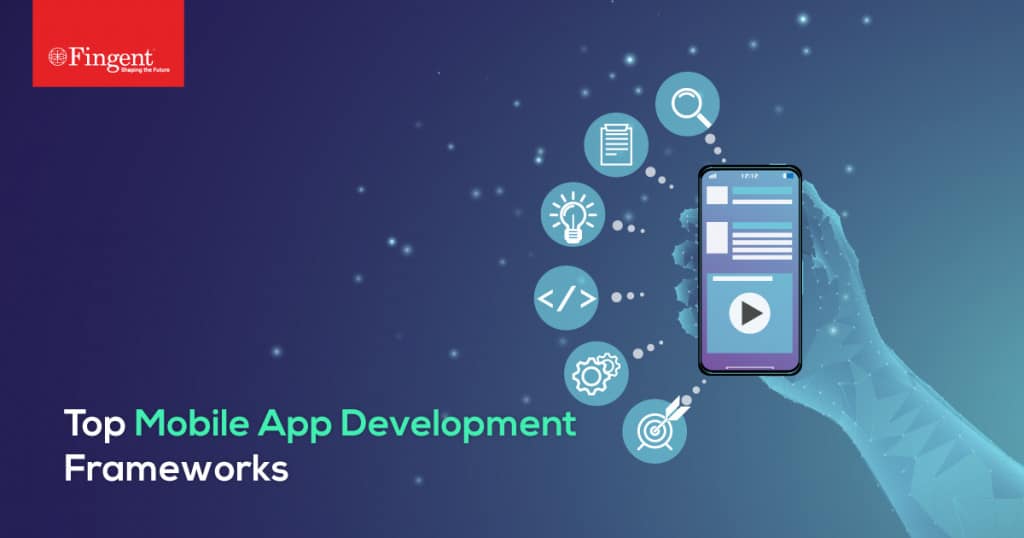
Keeping all this in mind, is there a formula to calculate custom app development costs?
Top Factors That Drive Custom Software Development Costs
1. Based on the complexity of the app
A simple app might take hundreds of hours while a complex app might take thousands. These hours also depend on how efficient the developing team is.
A simple app includes basic features like a login screen, user account, admin tools, and so on. It may have limited integration with other apps. Thus, it may take about 3 to 6 months to develop.
Along with all the features of a simple app, a complex app includes features such as integrations, profile feeds, enhanced admin tools, media streaming, and more. Such an app would take 6 to 12 months.
The most complex of all is an advanced app. This includes multi-language support, versioning, lots of user customization options, AI and AR, and more. This could take somewhere between 12 to 24 months.
2. Based on region
You will find potential developers around the world, over various time zones such as the US, India, and Europe. Each of these areas has expert developers but their rates vary depending on their location.
3. Based on development stages
The budget of the project starts to become clearer during the research stage. In this stage, you will be able to clarify your requirements and finalize goals and deliverables. You will also be able to assess risks and threats.
The next stage would be designed where the development team needs a clearer idea of what the app should look like. This stage will take longer and will be more expensive depending on the complexity of the user interface and so on.
During the development stage, each feature will add to the cost. The next stage of testing may require human users to ensure the correct functionality, and this will add to the cost. The final stage is maintenance and support. Bugs and unexpected behavior will need to be addressed; hence, it is important to budget in the final phase.
Watch now: How To Choose The Right Mobile App Development Approach
Top Ways In Which One Can Initiate Cost-Effective Custom Software Development
Are you wondering how you can get the app that you wanted in your limited budget? Here are a few tips that help you initiate a cost-effect app development.
1. Use software development kits wherever you can: Software development kits could trim weeks or months off your development schedule. Thus, reducing thousands off your development budget.
2. Find a vendor that can design and develop: Finding a vendor that does both designing and development can help you deal with communication problems and optimize workflow.
3. Get the MVP made: Getting the MVP made and testing on your users will help you identify what needs to be added. Eventually, your full-featured app will be ready. Besides, you will also learn how to optimize your budget.
4. Cross-platform development: Opting for cross-platform development can heighten your potential to reach a wider audience.
5. Do not rely on older operating systems: Just a couple of years older can make a huge difference. It is worth the effort to focus on consumers who keep up to date.
How Can Fingent Help Develop Top-Notch Custom Apps On A Budget?
We at Fingent understand considering how much it costs to develop an app can be an overwhelming experience. How about a consultation with our expert to get a quote?
We assure you that we have the specialized skill and experience to build a successful and budget-friendly app. Don’t take our word for it. Have a look at some of our case studies.
As your technology partner, Fingent can bring your brilliant ideas into digital reality!
We have helped many businesses grow their business with our innovative, modern mobile app solutions. Take a look at our most success stories here!
We can help you too. Connect with our experts today!
Stay up to date on what's new

Featured Blogs
Stay up to date on
what's new



Talk To Our Experts
A comprehensive guide to developing mobile apps in 2024 and beyond!
- Introduction
- What is Mobile Application Development
- Types of Mobile Applications
- Mobile Application Development Platforms
- Mobile Application Development Process
- Mobile Application Front-end and Back-end
- End-to-end Mobile App Testing
- The Cost to Develop a Mobile App
- Five Reasons Why Mobile Apps Fail and How to Prevent The Let-down
- Tips for Building Successful Mobile Apps
- Develop Your Mobile Application with Fingent
Introduction
Mobile apps – it seems like the world cannot function without them anymore! 2021 has seen a dramatic shift to online shopping. Increased reliance on the digital world pushes businesses to turn to mobile apps to tap a higher customer base. This makes it imperative for businesses to leverage the benefits of mobile application development. Regardless of their size, all businesses can use mobile application development to improve their revenues.
This blog will help you understand all that you must know about mobile application development. We will give you a basic idea of the app development process, different types of mobile apps, and the cost of developing mobile apps.
What is Mobile Application Development?
Mobile application development is the process of creating specific software applications that work on mobile devices. It involves creating installable software bundles, implementing back-end services, and testing the application on target devices. Mobile application development is also about the strategic process of designing, building, and launching a successful mobile app.
Mobile app development is a technique that leverages all the benefits a mobile device has to offer. This process takes into account the limitations of mobile devices and helps businesses to balance cost with functionality.
Types of Mobile Applications
Mobile applications are designed and developed with various frameworks. These include:
1. Native mobile apps
These are developed exclusively for a single platform written on one programming language for a particular operating system, for example, Android mobile apps or iOS mobile apps. As they are built to work on a specific OS or platform, native mobile apps are faster, more reliable, and offer offline capabilities.
2. HTML5 mobile apps
These apps help you enjoy the write-once-run-anywhere approach. Most of the Zoho apps are built using HTML 5. HTML5 mobile apps are compatible with cross-platforms and are cost-effective.
3. Hybrid mobile apps
These apps consist of back-end code and native viewer capabilities. Some of the world’s leading apps, like Gmail, Twitter, Amazon, etc., are hybrid apps. Hybrid apps can take advantage of plugins that allow developers to access the native features of platforms. In addition, they are faster to develop and simple to maintain.
Read more: Hybrid Mobile Apps: When and Why to Choose It For Your Business
4. Progressive web apps
Progressive web apps operate in a browser but act like native mobile apps. This means that no installation is involved, and PWAs are secure, cheaper, faster, and easier to develop.
Each mobile application development approach has its own advantages and disadvantages. Hence choose a method that matches your strategy. Your choice will help you achieve the desired user experience and build native features needed for your application.
Watch video: How To Choose The Right Mobile App Development Approach
Mobile Application Development Platforms
Two important mobile application platforms are iOS and Android. iOS is Apple’s mobile operating system specifically built for iPhones. Android runs on mobile devices manufactured by Google and various OEMs. Though there are many similarities between the two, each of them uses a different software development kit. For example, some of the top Android programming languages include Java, Kotlin, C++, C#, BASIC, Lua, etc. Examples of leading iOS programming languages include Swift, Objective-C, React Native, Flutter, etc.
Besides Android and iOS mobile application development platforms, there are cross-platform development programs such as Apache Cordova, Xamarin, Ionic, Python, Ruby, etc.
Read more: Top Technologies Used to Develop Mobile Apps
Leading mobile application development companies like Fingent help you choose the right combination of programming languages and SDKs for developing your mobile apps.
Mobile Application Development Process
Even with all the evidence pointing in favor of developing an app, it is important to thoroughly run through the mobile application development process. This will help you understand how your application will fit in with your goals and your market niche. Choose a path that will give shape to your vision.
Here is an overview of the mobile app development lifecycle:
- Research: All apps begin with an idea. However, it can be successful only when that idea benefits the customer. Ensure that your analysis includes the demographics, motivations, and behavior patterns of your buyers.
- Wireframing: Drawing a detailed sketch of the envisioned product will help you uncover usability issues. After sketching, wireframing will help refine your idea and organize all components.
- Assess technical feasibility: Asking questions, brainstorming ideas, and reviewing the status will help your team decide the initial functionality’s feasibility.
- Prototype: This step will help you see if you are moving in the right direction. It will also allow different stakeholders to have a first look at your app and validate the information you have gathered.
- Design: Create multiple variations of the screen. The clear visual direction will help you visualize the final product.
- Develop: This is the core phase of the app development process, where you actually develop the mobile app.
- Testing: The app is delivered to users to test the user experience. Their feedback and opinions will help you add what your app lacks from their point of view.
- Launch: Publish your app to the app store. However, plan regular maintenance to fix bugs and enhance user experience.
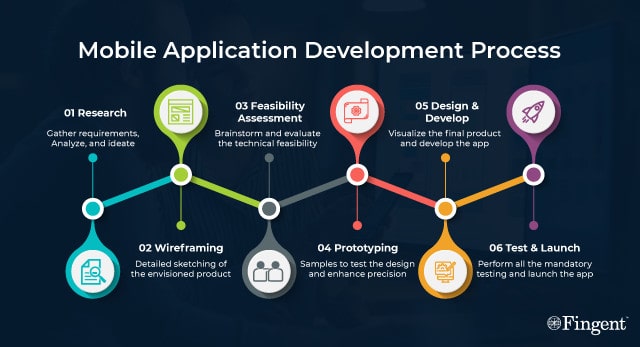
Having understood the lifecycle of mobile app development, it is vital to learn how ‘front-end’ and ‘back-end’ fit into mobile application development.
Mobile Application Front-end and Back-end
Mobile application front-end and back-end services are two core components of the mobile application.
The mobile front-end (client-side rendering) is the visual and interactive part of the user’s application. In contrast, the back-end (server-side rendering) delivers high-quality mobile applications that delight and retain users. The mobile app’s back-end stores, secures, and processes the data.
Some of the key front-end jobs include web designing, UI designing, UX designing, and front-end development. Back-end developers create the services to process the business logic and access the database, cloud services, and file servers to render the app on the server-side.
For applications where there is no interaction with a server, the role of the back-end and front-end developers can be performed by one person. For applications that require internet connection and interaction with a server, you will need two separate developers for each component.
Read more: Everything a CEO Needs to Know About Software Development Outsourcing
End-to-end Mobile App Testing
To stay on top of the competition in the mobile application market, you must test your application before starting the actual sprint. Here are nine steps to ensure the success of your mobile application:
- A developer must outline the list of all the cases and create a test plan.
- Decide whether the test will be manual or automated.
- Define test cases for different functionalities.
- Begin with exploratory manual testing as it does not require the initial investment.
- After detecting the patterns of outcomes and the frequency, consider automating the predictable ones.
- Start the sprint with usability and beta testing.
- Access the performance of the entire system.
- Conduct security and compliance tests to deal with exceptions and unpredictable situations.
- Launch the application to the app store and fix any issues.
These steps of mobile application testing ensure the efficient and enjoyable performance of the entire system.
Read more: Mobile app development: 4 tips to consider
The Cost to Develop a Mobile App
Ballparking the cost of mobile app development is anything but straightforward. Partly, it depends on your choice to develop it in-house or to hire an app development agency. Building an in-house team will incur additional costs such as office space, hardware, and software requirements.
On the other hand, if you choose to hire a mobile app development agency, you can enjoy a cost-efficacy and competitive advantage. These include the agency’s location, experience, and size. It also consists of the complexity of your app and back-end scalability.
Read more: Are you planning to develop a mobile application for your business? Then explore our template and share your requirements with us. We will get back to you with a ballpark estimate.
Five Reasons Why Mobile Apps Fail and How to Prevent The Let-down
Though mobile application development technologies advance year over year, the failure of mobile applications has been a concern for entrepreneurs. However, only ill-planned and ill-executed apps are set to fail.
It is critical to identify the pitfall areas and turn them into positives. Here are a few reasons that can lead to poor mobile applications. You will also find a few tips that help you to avoid mobile application failure.
1. Lack of market research
A tiny mistake in mobile app adoption can quickly turn into a major disaster. If your app does not address your target market needs, then it will not get downloaded. Even if it is downloaded, it may not be used after the first try. A great dream can thus quickly turn into a nightmare that leads to disappointment.
What can you do?
First, do not rush into creating a mobile app. Instead, begin your mobile app development by conducting detailed user study /market research. For your research to be effective, ask yourself, ‘which solution will my app provide that my target audience needs?’
To answer that question, you must define your target audience and investigate further about them. Understanding your market and your specific users will help you create an app tailored to what they actually need.
Second, know your competition. Do a competitor analysis to improve your mobile strategy. Doing so will help connect your idea with your target audience.
2. Lack of robust mobile app strategy
Without a well-designed strategy, your app will fail. This is especially true if you are new to the industry. A poor move at the strategy level is one of the key reasons for mobile app failure.
What can you do?
Every successful mobile app development is a result of a great strategy. It is a creative effort to incorporate consumers’ needs into an app that can accomplish a specific task quickly and effectively. Goal setting is an essential step. Here are some questions you can ask yourself:
- What will be my mobile app’s selling point?
- What features should I incorporate?
- What benefits will my app offer the user?
Such clearly defined goals will help you quickly map out your strategy.
3. Lack of good design
Poor app design and development can lead to bad business because users will ditch your app in the first crucial 8 seconds if the design isn’t great. Substandard coding and improperly implemented technology will lead to epic failures.
What can you do?
Remember, great design can bring in happy customers. Unfortunately, skipping the testing process is often the reason why some apps fail. Smart mobile app developers take time to conduct several QA tests throughout the creation of your app. This will help you deliver an app that is bug-free and user-friendly.
4. Failure to execute the plan precisely
You may encounter some serious competition in your industry. Or your team may experience some conflicting priorities from some key members. Another possibility is that you may run out of cash.
What can you do?
- Your mobile app can succeed if you have an original idea to offer something appealing to your target audience
- Ensure to work with people whom you can trust. And cooperate with your mobile app development partner
- Have a conservative budget that is well planned and generously funded
Following these steps will ensure that you have the money to build and launch your app successfully.
5. Failure to market your app
After all the hard work, it might still fail if you do not market your app rigorously.
What can you do?
- Have a crystal-clear marketing message aimed at your target customers
- Focus on the solution
- Explain how your target user can benefit from it
- If possible, plan to offer discounts and other perks to attract users
Marketing your app clearly and effectively will ensure that your customers do not move on to your competition.
Tips for Building Successful Mobile Apps
Did you know that, on average, a user spends 20 minutes on a mobile app each day? Another incredible fact is, the app installs increased by 31% in 2021. Furthermore, it is expected to surge in the coming years. This means there is hope for your app. Read on to find out how to approach building a successful mobile app that achieves your business goals.
- Be Agile but know your limits: Being agile and quickly reacting to the ever-changing needs of our customers leads to success, but it comes with a price. It is important to know when to be agile.
- Be alert to risks: Be enthusiastic and optimistic about your product but be realistic about the risks and problems. Identifying the risks early will help you react faster and more accurately.
- Build trust: Make your users feel unique and appreciated. Transparency and trust are the foundation for genuine interactions between the application and its users. To achieve this, you can create a trustworthy rating or review system and a functional service system.
Read More: Building a Business Mobile App in 2021? Here’s What You Need to Know
Develop Your Mobile Application with Fingent
The increasing adoption of remote work culture, online shopping, telemedicine, and e-learning has surged the demand for portable devices, particularly smartphones and tablets. This again has increased the need for mobile apps across all lines of business. According to App Annie’s forecast, the number of mobile app installs will reach 258 billion by 2022, an incredible 45% rise from 2019.
Fingent specializes in mobile app development, and our experts can help position your app for success right from idea to launch. In addition, leading B2B review firms like Clutch and Business of Apps have recognized our mobile app development expertise. Contact us to know more.
Stay up to date on what's new

Featured Blogs
Stay up to date on
what's new



Talk To Our Experts
Progressive Web Apps: New Cutting-Edge Trend in Web Development
Speed and convenience have become crucial in keeping online shoppers engaged. Progressive Web Apps development is a solution that allows the shopper to enjoy an app-like experience via a website (using web browsers). Users can install the PWA application from the browser window and access it just like a native app. In addition, progressive web apps improve the quality of your web applications, making them reliable, fast, and engaging.
Are you considering PWA for your business growth? Is it worth exploring this option? This blog will help you take a closer look at why Progressive Web Apps are turning to be the new cutting-edge trend in web development.
What is a Progressive Web App?
Frances Berriman and Alex Russel coined the buzzword “Progressive Web Apps” in 2015. To date, PWA has been a big player in this mobile-first world. Progressive Web Apps (PWA) have caused digital marketers to rethink how they design and deliver sites.
Progressive Web Apps can deliver a blazingly fast and slick app-like shopping experience to the end-user. It combines the best of two worlds: your website and the native application. It can be called a hybrid app as users can now browse your website on their mobile. Besides, PWA promises to solve two vital issues:
- Performance and usability
- Mobile-web conversion rates
Read more: Native Apps vs. Web Apps: Choosing the Best for Your Brand
Business Benefits of Progressive Web Apps
Several companies that focused their efforts on PWAs instead of having a separate native app have experienced increased conversions. A best case in point is the world’s largest online B2B trading platform, Alibaba.com. Alibaba.com increased its conversion rate by 76% across browsers after upgrading its website to PWA.
Here’s how your business can benefit from PWA:
1. High-performance rate
Response time is crucial for audience engagement and better conversion rates. PWA responds quickly as the browser uses caching to save the elements of the layout that are repeated in the template. This improves the speed of downloads and reduces page load time. Subsequently, better performance leads to a better user experience, which in turn increases customer retention rates.
2. Ease of use across multiple devices
Progressive Web Apps are built with a responsive layout in mind for an improved user experience. A responsive design will fit into any size of the screen with ease. In other words, PWA will adjust the experience as per the device screen size. You can further improve the user experience with a PWA manifest file that controls the full-screen view.
3. Seamless browsing experience
A traditional website is virtually useless without a stable internet connection, but not a Progressive Web App. PWA can be easily viewed offline as service workers automatically cache important application features and information from the user’s last online access. This way, the user can access it without any network. Plus, you can add a brand logo, product descriptions, and few advanced features to your offline page.
This is an additional incentive for shoppers to choose businesses with a Progressive Web App over those that use native apps. Such a seamless browsing experience rewards you with better engagement rates and customer retention.
4. Resembles native-built applications
PWAs can be designed to look and behave like native apps, or they can be designed to let users know they are browsing the Progressive Web App. Regardless of the developer’s choice, it can contain a complete set of traditional app functionalities with database access. The best part is that you can seamlessly integrate the application into an existing website or an app.
Watch Video: Fingent can help you choose the right mobile app development approach by evaluating your requirements.
5. No installation is needed
Shoppers can download your app directly onto their devices. Once downloaded, it gets its own icon on the screen, just like a traditional mobile application. This will avoid the slow and complex installation process, improve user experience, and reduce user abandonment.
Here is another way it can benefit you: users can easily access the PWA via a URL. In other words, a user can easily share this link with a friend contributing to increased leads.
6. No manual updates are required
Native apps must be updated periodically through mobile internet or a WIFI connection. Such updates can consume large amounts of data, which may be costly for some users. Fortunately, Progressive Web App updates are performed “on-use,” much like how a website is updated.
7. Low development cost
Developing a mobile app can be a costly process, especially for small businesses and startups. Thankfully, PWA development is much cheaper than traditional app development but provides a better option for companies to generate a positive ROI.
Read more: Mobile app development: 4 tips to consider
8. Wide range of features
The most prominent feature of PWA is push notifications. Publishers and developers can use this feature to implement creative advertising solutions. As the push notifications appear on a shopper’s device screen, it is read more often than emails or updates on social media. This can lead to valuable brand awareness and promote products or services.
9. Improved app and data security
Security has been a concern for both users and developers. According to new standards of web design, all customer information must be moved to HTTPS. So it is highly convenient to launch Progressive Web App within a safe environment. Moreover, it builds customer confidence in the security of their personal information as they enter sensitive data into your PWA.
10. Low data and low storage
Data is costly in some developing nations. That is why it is a bonus that Progressive Web App consumes only a fraction of data usage compared to native apps. Moreover, it does not take up significant storage space on devices, so users are more inclined to use a lighter app on their smartphones. Also, it contributes to better performance.
Read more: Building a Business Mobile App in 2021? Here’s What You Need to Know
Progress with Progressive Web Apps
Progressive Web Apps are the future of web-hosted apps as they can overcome the inherent limitations of web performance and insufficient or unavailable internet connections. Since PWAs can run on any modern platform, soon they will overtake truly native apps. Yes, PWAs have the potential to change the way the web works. However, Progressive Web Apps will not replace websites and mobile apps altogether. It is still in its infancy. To know which option is best for your business, have a chat with the technology experts at Fingent.
Stay up to date on what's new

Featured Blogs
Stay up to date on
what's new



Talk To Our Experts
Mobile application development is the #1 priority for businesses and enterprises in 2022. Are you well-equipped to plan your requirements and develop a robust business mobile app?
Mobile app development in 2022: Practices you should follow
As consumer behavior continues to evolve, more and more businesses adapt their strategy to earn customer satisfaction. With the increased public usage of smartphones, e-commerce and mobile backing experience a significant boom. A mobile app is essential for running a business successfully, and its significance has been more than ever before.
A mobile app is not just a mobile version of your website but is a crucial engagement and experience-driven environment needed for a cohesive customer journey. A mobile app can help build a strong mobile presence and attract a large audience towards your services or products.
According to a survey, by 2022, there will be around 7 billion mobile users worldwide, and by 2022, it is estimated that the annual mobile app downloads will reach 258 billion.
According to the ContractIQ survey, roughly 62% of businesses already have an app or are in the process of developing one. 50% of these businesses use their apps for support and engagement, 30% for revenue generation, and 20% for branding. Many companies are investing in mobile apps as they help generate new or expand an existing business.
With many countries still under lockdown and others following social distancing, the demand for apps such as digital payments, groceries, and entertainment has increased tremendously. Many enterprises and businesses have resorted to digital platforms and are reaping their benefits.
Here, we have discussed the importance of investing in mobile apps for your business and how it can boost your business growth even during a pandemic.
Why invest in mobile apps?
With more people turning to mobile apps to interact with brands, businesses’ mobile presence has become necessary.
In general, mobile apps help boost sales, provide a better customer experience and become more competitive.
According to a research by Clutch, two main reasons by which mobile apps facilitate business growth are:
- Improving customer service
- Providing a return on investment
Read more: Mobile App Development: 4 Tips To Consider
Five ways mobile apps benefit your business
1. Adds value to your customers
Customer engagement is the most significant aspect of customer relations, interactions, and transactions. When someone looks for your product or service, it’s essential to keep the person engaged.
You will have to increase your interaction with the customers for better promotion of sales.
So how does a mobile app fit in here? Starbucks’ mobile app is the best example of successful digital engagement that’s both innovative and inviting. Its user-friendly mobile experience, engaging loyalty program, mobile pay and ordering, and integration with other platforms and services make the coffee chain a customer experience leader.
To put it simply, a mobile app like Starbucks can offer an outstanding and engaging digital experience to customers.
2. Boosts brand building
In the past, brands used to advertise their services through posters, calendars, refrigerator magnets, billboards, and hoardings. Companies imprint their brand logos on such mementos to increase their visibility.
Today, a mobile app is capable of replacing all these. A mobile application can promote brand awareness and recognition among customers and be an effective communication channel. By regularly interacting with your target audience through the mobile app, you can earn customer trust.
Customized mobile apps help educate your customers about your brand and engage them effectively. The more they listen to you and your sales pitches, the more they will commit to your brand.
Read more: Top Technologies Used to Develop Mobile Apps
3. Increases sales
You can incorporate different loyalty programs into your mobile app. It will make your customers revisit your store (digital/ physical) and spend more time. Offering rewards in tiered layers allow customers to earn better incentives as they move from one level to another. It will help boost brand recognition.
Gamification is another way by which you can reward winning customers and provide discounts and prices to pre-defined activities such as sharing pictures or a notification. Scratch-and-win is another feature that can help raise engagement among users. It can work well for both customers and vendors.
4. Improves efficiency
Integrated shopping carts with food ordering and scheduling allow the business to house these functionalities like a digital footprint within the app. For instance, if an eatery incorporates an online food ordering system within its app, it will more likely see a significant increase in online and in-app ordering. Similarly, if a retail business collaborates with an e-commerce system, it will see a productivity improvement and eventually overall sales. With mobile apps, companies can enhance user engagement with inbuilt scheduling software that notifies users about the schedule.
5. Build a loyal customer base
Having a loyal customer base is very critical for any business. A mobile app is one of the best ways to engage with customers and create a loyal customer base. An app allows customers to interact with your business at their convenience. With referral programs, you can encourage your clients to refer your products or services to others.
If you are not convinced with the above points, here are a few more reasons to consider incorporating mobile apps into your business strategy.
- Notify users about your new offers and products
- Reach out to younger audiences
- Sync email and social media accounts of users
- Stay ahead of the competition
View infographic: All you need to know before selecting a mobile app development method
Consider a few things before getting started
Planning your mobile app
Before developing your mobile app, you must plan. You need to outline details like objectives, budget, specifications, and scope. Get a clear picture of your app before sending it to a mobile app developer so that you can be quoted accurately, reasonably, and realistically.
Choose the right developer
We may sound a little biased here. However, we need to say that we’re helping brands worldwide to realize their visions w.r.t. their mobile apps. We provide consistent, high-quality, and cost-effective results with robust, agile teams and dedicated QA practices. Our experts can help you identify your requirements precisely, select the technology and framework needed to build your app, customize the app according to your requirements, and update and maintain it regularly.
Watch video: Fingent can help you choose the right mobile app development approach by evaluating your requirements.
If you’re not sure how or where to start with your enterprise or business mobile app, we’re here to help. Fingent’s mobile app development team has curated an app specification template that is simple and straightforward. Please fill out this template and share it with us. Our expert will get back to you with the answers.
Alternatively, you can send us your requirements and queries by clicking here.
Stay up to date on what's new

Featured Blogs
Stay up to date on
what's new



Talk To Our Experts
With over a billion smartphones and over 179 billion mobile applications downloaded in a year, mobile development has clearly taken center stage in the world of computing.
Enterprises and developers who have developed state-of-the-art cutting edge mobility solutions cannot rest on their laurels though. The world of mobility is ever evolving, with new breakthroughs and refined systems relegating existing technologies and methods to the back burner, at a rapid pace. Here are some of the imminent future trends that are sure to shake up the world of app development and disrupt the ecosystem as we know it today.
The Rise of Internet of Things and Mobile-connected Smart Objects
About 101.9 million wearable devices were shipped in 2016, and these numbers are growing exponentially. Additionally, about 26 billion connected devices, from toys to domestic appliances, from medical devices to controllable power sockets, and much more are expected to be up and running by 2020.

Wearables have been popular for quite some time now, but wearables are evolving, becoming smarter than before, as epitomized by Apple Watch, Microsoft’s HoloLens, and other gadgets. Such smart wearables would be deeply integrated with apps, to deliver a well-synchronized and complete experience for users. Apps in the IoT age would evolve to become a personal-area network hub and a central console for hundreds of connected things around users. The connected things, wearables, and other gadgets would deliver relevant real-time information to users, analyzed into actionable information.
Apple’s “Homekit” range of products, which enable wireless and electronic control of household appliances through a smart home app is a portent of things to come. Likewise, applications such as self-driving cars, deep freezers that read tweets, and more are all on the verge of becoming mainstream, and apps that power such technologies will become commonplace.
Apps to Facilitate Even Deeper Personalization
Apps have an inherent advantage of being able to leverage the unique capabilities of mobile devices. Many apps already leverage features such as GPS, location based services, voice and facial recognition capabilities and other capabilities. Going on, as the marketplace becomes more competitive and technology unlocks new potentials, leveraging such features would become the norm rather than the exception. The magnitude of the capabilities would also increase.
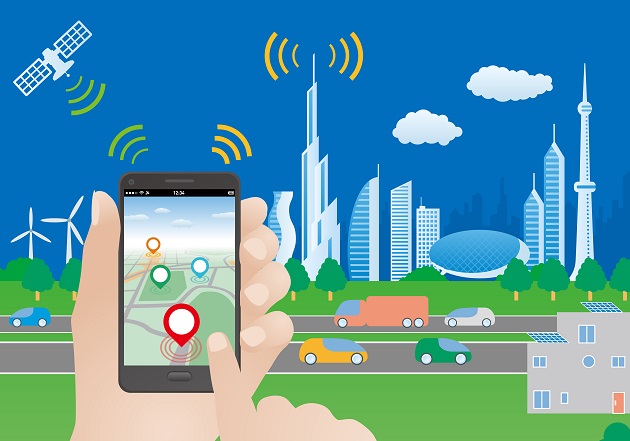
It is going to get better. For instance, modern smartphones have location sensor capabilities that use multiple positioning methods to provide different granularities of location data. Apps would leverage such capabilities to ascertain the user’s location to within a few meters and offer highly relevant and extremely personalized contextual information and services. Several day-to-day activities, from ordering groceries to calling an electrician, and several high-end applications related to security, gaming, vehicle navigation and more would become not just possible but also seamless, leveraging such capabilities.
Apps to Become Technologically Richer
As the app marketplace become increasingly crowded and user attention becomes short, app developers would deploy techniques to deal with challenges such as partial user attention and interruption, in a big way. Some of the innovative features tipped to become commonplace soon, includes circular design pattern, interactive content layers, intelligent manipulation of content to allow users interact with the content in further detail, and much more.

Such innovations would come on top of the widespread adoption of artificial intelligence, augmented reality, and other technologies. Research major, Forrester, estimates more than 300% increase in investment in artificial intelligence in 2017, compared to 2016. App developers are tipped to incorporate advanced analytics, cognitive interfaces, and machine learning techs in a big way, to deliver hyper-powerful apps.
Cross-Platform and Cross-Device Development
The mobile space is highly fragmented with different operating systems, device configurations and screen sizes. This is unlikely to become passe anytime soon, and in fact, the fragmentation may accentuate as new mobility inspired hardware and software hit the market.
The sustenance of such a fragmented ecosystem would mean app developers adapting to roll out cross-platform apps in greater numbers. HTML5 may have been a false flag, but newer solutions are on the anvil to make apps work on all platforms.
Cloud adoption of apps would also rise in a big way compared to the present. A Cisco research estimates cloud apps to drive 90% of total mobile data traffic by 2019, with 11-fold growth, or a CAGR of 60% from present times. Services such as Google Drive, Dropbox, and OneDrive are only the tip of the iceberg, compared to what lies ahead.
There will be a tectonic change in the programming language in use as well. For instance, while Objective C is the incumbent language for developing iOS applications, Swift, the next-gen programming language has already caught the fancy of most developers.

Overall investment in enterprise apps is slated to grow. An Adobe study reveals about 77% business owners finding enterprise apps advantageous to their business, and 66% of them increasing their investments in this front. However, enterprises seeking to get returns on such investment need to go beyond merely adopting the latest technology. They need to ensure the enterprise apps they roll out are robust and customized to their enterprise. A tie up with a sound partner, whose sole focus is app development, and who has a talented team to back up their claims works wonders.
Stay up to date on what's new

Featured Blogs
Stay up to date on
what's new



Talk To Our Experts
The proliferation of smartphones of various hues has made the mobile ecosystem hopelessly fragmented. Cross platform mobile application development is the in-thing now, as developing a native app for each platform is both time-consuming and resource crunching. At the bare minimum, a new app has to be compatible with and available on Google Play, iTunes and Windows, the three major mobile platforms, and this basically entails reinventing the wheel three times over.
Building a cross platform mobile app, however, is not easy, owing to the differences in the programming language, event model, UI model, and resource models. HTML5 emerged as the bright new hope at the turn of the decade, but flattered to deceive, often creating data integrity, security, and syncing issues.
The following are ten popular cross-platform mobile application development tools that gained centre stage in 2016, not ranked in any particular order.
1. Xamarin
Microsoft’s Xamarin is the most powerful and robust among the several cross-platform application development tools in vogue. It enables developers to build applications for different operating systems, using a single programming language, code base, and class library.
With its C# codebase, Xamarin allows developers to roll out Android, iOS and Windows apps without duplicating the effort. Xamarin comes equipped with a rich set of features, such as Lambda Expressions, Dynamic programming, LINQ, and a wide range of new .NET APIs. It has added F# of late, as well. These features allow developers to share a lot of the app logic between platforms, drastically reducing time to market compared to building native UIs for each platform.
Xamarin supports both Model-View-Controller (MVC) and Model View ViewModel (MVVM) patterns. The MVC pattern allows developers to keep application logic and presentation separate, and modify, test, update, and maintain application code easily. The MVVM pattern allows programmers to reuse the code base to create other projects. Users need to chalk out platform specific code only for the UI, with the option to reuse all other code. The clients get a fluid performance of native apps without maintaining multiple code bases. Xamarin also offers a cloud service, facilitating the testing of any number of devices.
Custom plug-ins that may be compiled easily further promote reuse. Xamarin Forms allow developers to achieve 96% reusability on their projects.
2. Kinvey
Kinvey works on a cloud backed model, with HTML5 as the base. The suite Integration with Gizmox’s Visual WebGui HTML5 platform allow developers to roll out the apps developed under HTML5 using C# or VB.NET, and Visual Studio, thereby offering a solution to the security and other technical challenges that deploying cross-platform HTML5 poses. The app facilitates simple, fast-paced agile app development.
3. Xojo
Xojo positions itself on offering a simple way to create cross-platform apps, not just for mobile platforms such as Android and iOS, but also desktop apps for Windows, Linux, and OS X, and for Raspberry Pi as well.
The Xojo development tool allows developers to create a single code base and compiles the developed apps as native executables for the required platform. The powerful code editor and an intuitive drag and drop option make the task of developing apps very easy. The Xojo backend does all the work, and infuse the new apps with controls familiar to the platform, giving it the look and feel of an app developed on the native platform.
4. Appcelerator
 The Appcelerator app development platform facilitates coding in JavaScript, and offer several value-added features such as real-time mobile analytics, and Mobile backend as a service (MbaaS.) It offers a host of high-quality drag-and-drop palette, and achieves 60% to 90% of code reuse when publishing on different platforms.
The Appcelerator app development platform facilitates coding in JavaScript, and offer several value-added features such as real-time mobile analytics, and Mobile backend as a service (MbaaS.) It offers a host of high-quality drag-and-drop palette, and achieves 60% to 90% of code reuse when publishing on different platforms.
5. Mag+
The Mag+ app SDK is highly preferred in the print industry, for catalogs, magazines, and other marketing collateral. The app offers core components for each platform, and allow developers to build atop these components. It is even possible to roll out simple cross-platform apps in double quick time, without any coding.
6. Corona Labs
Corona is popular in the gaming industry, to develop cross-platform 2D graphics games app and educational apps. Corona adopts the powerful and flexible Lua programming language, which is written in C. Corona SDK generates instant results, as soon as the developers write the code. The SDK allows setting up prototypes in double quick time, with minimal code, accelerating time to market.
7. Cocos2D
Cocos2D is a set of frameworks that allow publishing to different mobile platforms, and even desktops from a single code base. Additionally, it offers the flexibility to code in C++, JavaScript, C#, objective C, and a few other languages.
Cocos2D is open source and mostly used to develop cross-platform games and animated content.
8. MobinCube
MobinCube offers a series of templates with drag-and-drop functionality, allowing users to roll out apps on the fly. The simple and easy non-code methodology allow even ordinary, non-technical users to develop apps that work across platforms.
9. Dropsource
Dropsource is a browser based app builder, offering automated solutions for creating Android and iOS apps. The editor offers easy drag and drop interface, connect apps with any RESTful API, and an integrated development environment to customise the source code.
10. BiznessApps
BiznessApps thrives on offering simple solutions to small businesses who want to get basic apps running without hassles. It facilitates developing cross platform apps and mobile websites, through drag-and-drop development and automated submission to the app store, without the need for coding. There are a host of value added features such as seamless integration with third-party systems, rich analytical insights, and more, on offer.
The many cross-platform application development tools on offer are all easily within reach, and the possibilities endless. However, you still have to develop the apps, and make sure to get the UX, the overriding concept and other crucial ingredients right. When you partner with us for your cross-platform mobile application development, you gain from our vast expertise and our highly skilled talent pool, who are seasoned in developing hundreds of cross-platform apps, for all purposes, and for all sectors.
Stay up to date on what's new

Featured Blogs
Stay up to date on
what's new


















